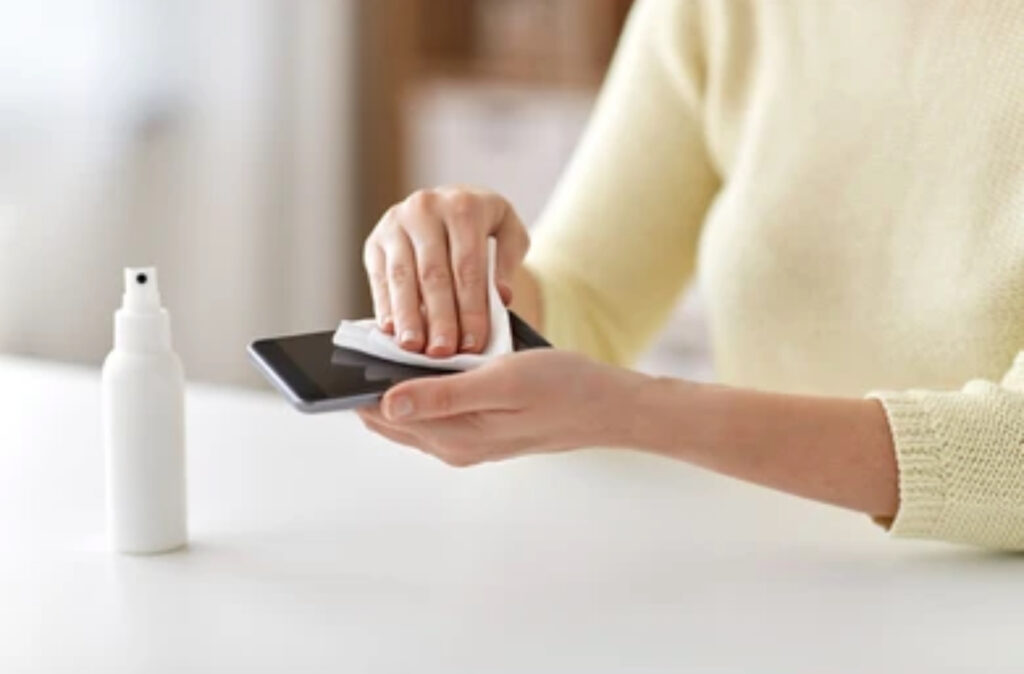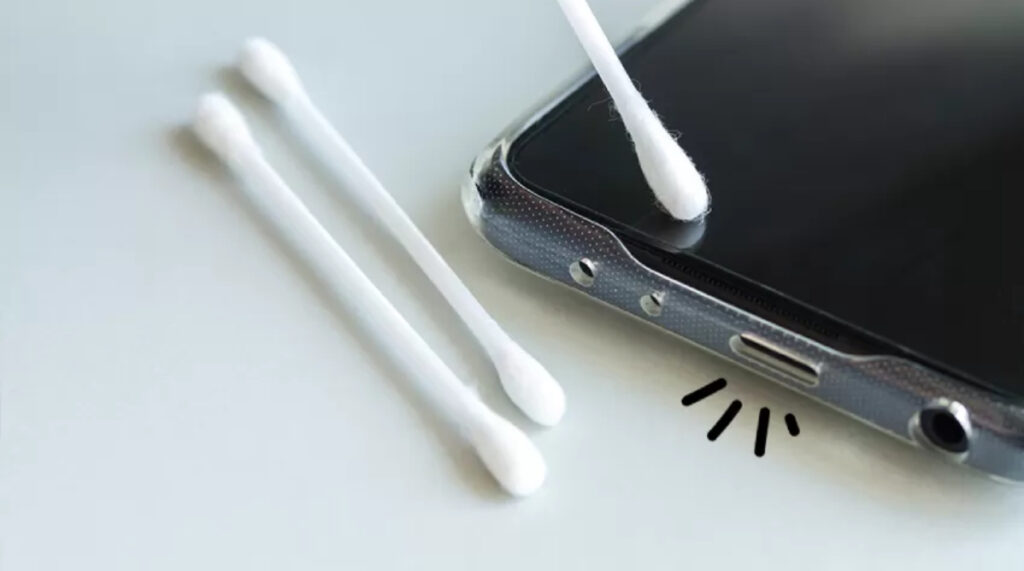If you’re looking to steer clear of germs, begin by disinfecting the device you touch most often — your phone.

Your phone has become an everyday companion — tagging along to work, the gym, restaurants, and yes, even the bathroom. But for something that’s constantly in your hands, it’s surprisingly filthy. Research shows that smartphones often harbor more germs than a public toilet seat, thanks to frequent handling and being placed on shared surfaces.
If you’re not regularly cleaning your phone, you’re essentially creating a haven for bacteria and viruses. The good news? It doesn’t take much to keep your device sanitary. With a soft cloth, the right cleaning solution, and a few simple steps, you can help reduce the risk of spreading germs to your hands, face, and everything you touch.
According to the Federal Communications Commission, it’s smart to disinfect your phone daily — but do so carefully. Harsh chemicals and abrasive tools can damage your screen’s protective coating. That’s why it’s important to use safe, effective cleaning methods.
In this guide, we’ll walk you through how to properly clean any smartphone — from iPhones to Androids — while keeping both germs and potential damage at bay.
After handling high-touch public surfaces like door handles, bus seats, shopping carts, or gas pumps, it’s natural to think your phone needs a strong disinfectant. But using rubbing alcohol or pure alcohol-based products isn’t the solution — they can strip away your phone’s protective coatings that guard against water and oil damage.
Some people suggest mixing your own alcohol and water solution, but if you get the ratio wrong, you could end up damaging your phone. The safest bet is to use disinfectant wipes containing 70% isopropyl alcohol. For everyday sanitizing, you might also consider UV sanitizers like PhoneSoap, which claim to eliminate 99.99% of bacteria and germs. It’s also helpful to check cleaning advice from phone makers and mobile carriers.
Apple now allows the use of Clorox Wipes and similar disinfectants — something they didn’t recommend before the pandemic due to concerns about screen coating damage. AT\&T recommends spraying a 70% isopropyl alcohol solution onto a soft, lint-free cloth to clean your phone. Samsung gives similar guidance, suggesting a microfiber cloth paired with a 70% alcohol-based cleaner. Just remember: always power off your phone before you start cleaning.
How to Clean Off Fingerprints, Sand, and Makeup
Some messes require more targeted cleaning than your usual daily wipe-down. After a beach day or applying makeup on the go, your phone might need a little extra care.
Removing Fingerprints:
Smudges are unavoidable because of the natural oils on your skin. A microfiber cloth is the safest way to wipe them away. For a more thorough clean, lightly dampen the cloth with distilled water — never put water directly on your phone — and gently wipe the screen, back, and sides.
You can also use a reusable microfiber screen-cleaning sticker that sticks to the back of your phone for easy access whenever you need a quick wipe
Getting Rid of Sand and Tiny Debris
Sand and lint often find their way into your phone’s ports and small crevices. A simple solution is to use Scotch tape — press it along the edges and over the speaker openings, then roll it up and carefully insert it into the ports. The tape will lift out the particles, and you can just toss it afterward for quick cleanup.
For tighter spots like speaker holes, try using a toothpick gently or a small vacuum attachment designed for narrow spaces. These tools are also great for cleaning other gadgets or hard-to-reach spots in your car..
Removing Makeup from Your Phone Screen
If you use foundation, moisturizers, or other skincare products, it’s likely you’re transferring residue onto your phone screen. While facial makeup removers work well for your skin, they often contain chemicals that can harm your phone’s display. Instead, opt for a screen-safe cleaner like Whoosh, which is alcohol-free and gentle on electronics.
Another safe method is to wipe your screen with a lightly damp microfiber cloth — just be sure it’s not too wet, and wash the cloth after use to avoid buildup.
What If Your Phone Is Waterproof?
For phones with water resistance ratings of IP67 or higher, avoid rinsing them under running water or submerging them, even if the device claims to handle it. The safer approach is to wipe them down with a damp cloth.
Once cleaned, use a soft, dry cloth to gently pat down the entire phone, especially around ports and speaker grills. While these phones can handle water exposure, moisture in the ports can interfere with charging. Keep in mind that water resistance is designed for accidental splashes — not regular cleaning or underwater use.

What Not to Use When Cleaning Your Phone
While we’ve already mentioned avoiding rubbing alcohol and makeup remover, there are several other common products that can also harm your device. Here’s what to steer clear of:
- Hand Sanitizer: Many contain ethyl alcohol and added fragrances that can damage your phone’s surface.
- Window or All-Purpose Cleaners: These can erode the protective coating on your screen, making it more prone to scratches.
- Paper Towels: They can tear easily, leaving behind lint, and their coarse texture may scratch your screen.
- Dish or Hand Soap: These typically require water for use, and excess moisture can be risky for your phone — even if it’s water-resistant.
- Vinegar: Like alcohol and harsh cleaners, vinegar can strip your screen’s protective layer.
- Compressed Air: The strong blast can damage delicate internal components, especially the microphone. Apple specifically warns against using it on iPhones.











